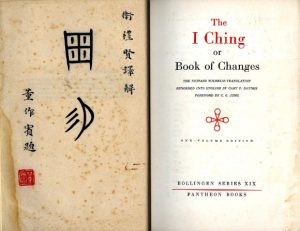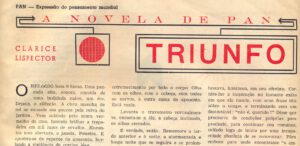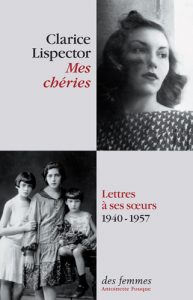Rosenbaum, Yudith. The Unfamiliar. IMS Clarice Lispector, 2024. Disponível em: https://site.claricelispector.ims.com.br/en/2024/02/22/the-unfamiliar/. Acesso em: 06 January 2026.
The word “unfamiliar” is used by Clarice Lispector in several of her works. To be precise, in the original Portuguese, Clarice employed the neologism infamiliar, which is not in the dictionary, though it cannot be affirmed that the author is the source of this term in Brazilian literature. Nonetheless, by mentioning the word “unfamiliar” at least sixteen times1, whether in novels, short stories, or chronicles, the author makes this unique signifier an object of greater attention. Even more so if we consider that the terms “strange” and “strangeness,” both correlated to the meaning of “unfamiliar,” appear no less than hundreds of times in the narratives.2
The meanings that the word encapsulates, as will be seen, condense one of the most characteristic features of her texts. It is not uncommon for male and female readers, as well as critics in general, to evoke the “unfamiliar” effect of Clarice’s plots, alongside the semantic and syntactic layers of Lispector’s unusual writing. In fact, “unusual” gravitates in the same lexical field as “unfamiliar,” whose sign power comes from its connection with other knowledge that gave rise to it, psychoanalysis being the territory in which the word gains more particular resonance.
For an initial apprehension of the concept-word “unfamiliar” within Freudian studies, it must be said that, in Brazil, on the centenary of Freud’s remarkable essay “Das Unheimliche” (1919), the title was translated precisely as “O infamiliar” (The Unfamiliar) – Freud’s article transformed into a noun what was a quality of feeling – thus echoing, coincidentally, Clarice’s use of the word infamiliar, which appeared long before the aforementioned translation, already in her second novel, The Chandelier (1946).3 Before and after this happy discovery by the translators, the difficulty in finding a word that encompassed the phenomenon, as Freud conceived it, led to attempts in several languages4, and in Portuguese we had a few choices, such as “strange,” “disturbing,” and more recently, “uncomfortable.”
But what does das Unheimliche mean in Freudian theory and what relation would Clarice Lispector have with this notion?
In the field of aesthetics, according to Freud, there would be a domain of distressing and terrifying feelings, neglected by specialized literature aimed at the Beautiful and the Grand. The “unfamiliar” would be a core inside this domain. In the German language, unheimlich is a commonly used adjective/adverb, formed by the negative prefix un and the word heimlich (familiar), derived from Heimlichkeit (familiarity), whose core is Heim (home, address), which means domestic, intimate, known. After a vast lexicological, philological, aesthetic, and literary research to understand the meanings of the word, Freud realizes that there is an ambiguity inherent in the term heimlich, due to its antithetical character: it refers both to what is reliable and comfortable and to what remains concealed, secret, and hidden, thus being able to coincide with its opposite, unheimlich. Such a discovery makes Freud assert: “Thus heimlich [familiar] is a word the meaning of which develops towards an ambivalence, until it finally coincides with its opposite, unheimlich [unfamiliar]. Unheimlich [unfamiliar] is in some way or other a sub-species of heimlich [familiar]” (p. 4). And what would make the familiar “unfamiliar?” According to Freud, it would be the process of repressing what should not come to the surface due to its incompatibility with consciousness, such as certain desires, thoughts, and memories: “In this case, too, the unheimlich [unfamiliar] is what was once heimisch, homelike, familiar; the prefix ‘un’ is the token of repression” (p. 15).
At the end of the aforementioned essay, having covered the fantastic literature of E.T.A. Hoffmann to corroborate psychoanalytic science, Freud concludes that the “uncanny” (a recurring term for the word Unheimliche) reveals the anguish that affects characters in the face of what should have remained unconscious and returns, thus generating uneasiness. The “unfamiliar,” Freud concludes, is the effect of the undesired (re)appearance of childhood complexes, such as the experience of the double (“doubling, dividing and interchanging the self,” p. 9), the fantastic (breaking the logic of causality between events, similar to magic and the supernatural), animism (believing in multiple natures that link human and non-human beings), the compulsion to repeat (involuntary returning ideas, feelings, scenes, places, etc.), and the castration complex (narcissistic cutting that refers to the horror of death). The presence of the feminine, a radical otherness to man that is hostile to him due to its strangeness and difference, as well as helplessness in the face of relentless destiny, are also possible sources of the “unfamiliar” analyzed by Freud.
In any case, the feeling of the “unfamiliar” can result from the loss of boundaries between the psychic world and the outside world, between reality and fantasy, or between the animate and the inanimate. The anomalous sensation accompanies situations in which the natural exchanges characteristics with the supernatural or magical, thus not distinguishing one and the other due to the absence of limits and of hierarchy between them, and causing distressing strangeness when both types of nature are not differentiated.5)
It is important to underscore that the sensation of such unfamiliarity (whether in clinical patients or in literature) reveals the division of the subject in relation to itself, since the supposed unity of the self is revealed to be false. The unconscious becomes the territory of experiences that become foreign to the subject itself, which establishes the non-identical at the heart of identity. Such a split, given by the process of repression, is constitutive of human subjectivity, and contents jettisoned from consciousness by defense mechanisms can, under certain circumstances, break through the blockade that prevents their expression and dominate the scene.
It was necessary to briefly revisit Freud’s essay to point out directions for Clarice’s literature in frank dialogue with the same conception of the psychoanalytic subject. The modernity of Lispector’s work could not fail to expose its link with the Zeitgeist (spirit of the times) that generated the artistic vanguards of the late 19th century, as well as psychoanalysis itself. Cartesian man, in his claim to unity, rationality, and coherence with himself, is dethroned in the name of the multiplicity of “selves” and lack of knowledge about himself. “The ego is not master in its own house,” says Freud.6 And, when you least expect it, you experience contact with das Unheimliche, in which instinctual intensities, sensations, and past and present ghosts are mobilized by everyday situations. It is at this moment that we rediscover the thread of Clarice Lispector’s work, always attentive to what escapes the fragile egoic vigilance and the noisy silence that is heard from this “dark, strange room,” in Freud’s words.
Clarice’s Unfamiliar
The “unfamiliar” signifier pervades practically all of the author’s books, but there are passages in which it appears more expressive, highlighting what Freud mapped out from Hoffmann’s story, but going further. Das Unheimliche instills in the atmosphere of the narratives something that escapes the common and the usual, arousing even horror, fright, astonishment, uneasiness, estrangement… In her second novel, The Chandelier (1946), whose main character is Virgínia, there is a description of the space and in it the term “unfamiliar” appears for the first time and establishes a sinister atmosphere:
There was in the somber and by no means extraordinary rooms something that would stand out and alarm because it contained an involving and unfamiliar intimacy — like a strangers’ dirty bathtub where you had to strip and abruptly place yourself in contact. (LISPECTOR, 2018, p. 134-135, my italics)
The scene does not define what this “something that would stand out” in the “somber and by no means extraordinary rooms” would be, as an alarm for containing an “involving and unfamiliar intimacy.” The excerpt is mysterious, but it seems to refer to an external order that is projected into the interior universe and a subjective order that impacts the exterior, thus making the environment no longer familiar. What would it be? The second part of the sentence intensifies the idea by introducing the image of the “dirty bathtub” (the most private and “secret” space in the house) of strangers, that is, unrecognizable presences with which Virgínia, the protagonist, imagines she should “strip” and place herself “in contact.” Shadows, intimacy, bathtub, strangers, contact, nudity… A certain violence is not absent in this encounter with strangers. If there is a return of “something” childish – a child bathing in the bathtub, for example, or an invasive someone in the house – the unpleasant character draws attention precisely because of the word “contact.” Das Unheimliche appears, therefore, as a disquieting effect activated by this “something” (some memory?) – perhaps an already known but repressed experience – relived now in this half-dreamlike vision of a bathtub marked by strangeness. The comparison “like a strangers’ dirty bathtub” establishes the bridge between present and past. What until then was sneaky and unconscious, because it harbored some threat, comes to light and causes the “unfamiliar” feeling. The issue that “stands out,” therefore, is the intimacy that has become sinister, the known that appears as unusual.
In her texts, Clarice wants to capture the moment in which a crack opens in the daily routine when “something that would stand out,” to use her expression. The trigger for unfamiliar processes can be absolutely any stimulus – an egg on the kitchen table (“The Egg and the Chicken”), roses in the vase (“The Imitation of the Rose”), a clock (“Report on the Thing”), a collision between mother and daughter in the taxi (“Family Ties”), a dead rat on Copacabana Avenue (“Forgiving God”)… The anguish or disquiet aroused in the characters can come from the most unusual experiences or, paradoxically, from positive affects that are not at all gloomy but always provoked and mobilized by the friction between the inside and the outside. In the aforementioned novel, for example, sometimes it is Virgínia’s own joy or happiness that brings about the “unfamiliar” state, as seen in the following quote:
She remembered the afternoon with Vicente; the happiness was so violent, shaking her so; those horrible instants had taken her outside herself, unfamiliar, odd and broken off from her interior; so you could perish of happiness, she’d felt so abandoned; another minute of joy and she’d have been tossed out of her world because of her daring desires, full of an intolerable hope. (The Chandelier, p. 221, my italics)
The italics mark unusual reactions attributed to the happiness that the character experienced on an afternoon with Vicente: violent, horrible, perish, abandoned, intolerable … The happy experience, that common sense would consider only a source of sublime and pleasurable emotions, leads Virgínia to become “outside herself” and feeling as if she could “perish.” Excess happiness, therefore, can toss the character “out of her world because of her daring desires.” What exceeds egoic continence also moves the “unfamiliar” state; the unexpected outbreak of a feeling that evokes an abandonment (“she’d felt so abandoned”) reappears in a horrifying way. Being outside oneself is experiencing one’s own foreignness, with which one has already made contact and distanced oneself. Would it have been the intensity of “daring desires” that now returns as a threat which transports her “out of her world?”
The “unfamiliar” specter in Clarice’s narratives gains multiple figurations and reveals the author’s mastery in giving form to what precisely eludes acquiring finished forms. The “un-familiar,” as the name would have it, signals to what has lost its routine configuration, above all when the protective and imaginary covers, which mediate our connections with the everyday world, break and the Real (the Lacanian record of what is impossible to be encompassed by the symbolic) is laid bare. This is where the strange takes shape and the nakedness of things is a blinding and disturbing presence.
The short story “Love”7, from Family Ties, is especially revealing of the transformation of the prosaic, of domestic and everyday life, into the “unfamiliar.” The character Ana is sitting on the tram with her shopping bag on her lap, going back home. She recalls how she had “supplanted her inner disorder” in her youth, when she felt a “restless exaltation so often mistaken for unbearable happiness” (p. 116). She now lived an “adult life” (p. 116), feeling the solid and “firm root of things. And this is what a home bewilderingly had given her” (p. 116), she asserts, thus legitimizing the choice for marriage and motherhood. That is when she catches sight of a blind man chewing gum standing at the tram stop. It is enough for her heart to beat “violently, at intervals.” “He was chewing gum in the dark” (p. 117-118), says the narrator. The blind man, who looks within, awakens Ana to what she cannot see in herself, thus operating as the mythical figure of Tiresias. The tram “suddenly lurched” and the groceries inside the knit sack fell to the ground, breaking the eggs: “Viscous, yellow yolks dripped through the mesh” (p. 118). The sequence of sentences unveils the crisis that affects the protagonist: “The damage was done” (p. 118), “The mesh had lost its meaning and being on a tram was a snapped thread” (p. 118), “The world had become once again a distress” (p. 119). And the sign of the crisis “was the intense pleasure with which she now looked at things, suffering in alarm” (p. 119). The disturbing presence of the blind man, an index of the external world, causes an internal displacement (or detachment?) that projects Ana (like Virgínia) towards the “outside” of her known world. The rupture with the “chain of life,” which was built to stifle the intensity of pleasure and displeasure, expels Ana from the family and social “mesh” in which she played assuring roles and launches her into the terrain of unfamiliarity. The adapted identity is left behind and the gap opens to the new which, nonetheless, has always been there ready to assault the distracted subject, at the slightest contact with the fabric of life. The “unfamiliar” in Clarice is the unarmed encounter with Life (the capital letter belongs to the author) experienced outside its usual framework.
She gets off the tram disoriented and enters the gates of the Botanical Garden, where she experiences an unlimited vastness and the coexistence of opposites, such as fascination and nausea, pain and pleasure. “Everything was strange, too gentle, too big” (p. 120). Or even: “The Garden was so pretty that she was afraid of Hell” (p. 121). The memory of her children makes Ana rush back to her now unfamiliar home. “[W]hat new land was this?” she wonders. “And for an instant the wholesome life she had led up till now seemed like a morally insane way to live” (p. 122). The typical inversion in Clarice’s texts is sealed: everyday life becomes strange and its opposite comes to be natural. The violence of the domestication of life (“a morally insane way to live”) is denounced by an uncorrupted gaze, which is capable of seeing the commonplace for the first time.
To think about the “unfamiliar” in Clarice is to glimpse at the heart of the family itself, in the most hidden intimacy, the emergence of its greatest threat. And precisely the short stories in Family Ties are the most affected by unusual events in the midst of the Rio middle-class family environment, which is ruled by the patriarchal order still in force in the 1950s, the period in which the book was written. The more the characters avoid contact with strangeness, the more they are caught by it. A sentence from the short story “Happy Birthday,” which stages (theatrically) the 89th birthday party of matriarch Dona Anita, is a good example of the effort to condone the artificiality of established relations, even if affects do not correspond to them: “The birthday girl received a cautious kiss from each of them as if her so unfamiliar skin were a trap” (p. 160).8 The relatives greet the birthday girl with caution, knowing that the protagonist views them with contempt, and they fear the unfamiliarity of her skin, a symptom of family ruin. The skin, the largest organ in the body, is what unites and separates one person from another, and through it we experience (in the flesh) the disguised loss of the bonds built.
This is also the case of Laura, from “The Imitation of the Rose,” whose “family ties” represent a maddening bond. Having returned from a psychiatric hospitalization, she makes an effort to be “well” (the suggestive quotation marks are from the story), being the submissive and insignificant wife, dull in her brown dress and her brown eyes. With the same function as the blind man for Ana, it is the sight of some roses in the vase that makes what until then had been kept secret overflow. The erotic, vital, and transgressive explosion (the roses simulate a sexual act) unrepresses an entire life that illness tried to undermine. And it is like a “mad woman” that Laura gets on her train to Mars… Leaving so-called “normality,” now seen through the eyes of estrangement, Laura experiences her feminine ecstasy without, however, returning to the socius, as Ana does. Transformed into a rose by the force of her gaze9, Laura blossoms in her particular imaginary universe, distant and averse to the limiting entanglement of ordinary life.
If in “The Imitation of the Rose” the encounter with the “unfamiliar” introduced by the plants is the springboard to perdition (or liberation?), in other narratives it can be the operator of an essential crossing that passes through the experience of the formless. In Clarice, the dissolution of form is perfectly in tune with the idea of something that resists being represented – a major motif in Clarice’s writing –, always falling short of any sign, but which fiction seeks to remake with its web of verbal threads. In the (dis)encounter between words and things, the emergence of the “unfamiliar” surprises those who come into contact with what is too alive, as one reads in the chronicle “The Jelly As Alive as the Placenta.”10 It concerns the account of a nightmare had by the chronicler in which her face is reflected in a viscous matter sliding on the furniture. The term “placenta” in the title suggests the image of a fetus, thus introducing the formless into the field of the beginnings of human life: “Thrust into horror, I wanted to flee from my counterpart – the elemental jelly.” The apparition seems to come from a pre-subject without a defined form, named as “my essential deformation.” The double here appears sinister.
The novel The Passion According to G.H. (1964)11, is one of the most pulsating examples of the confrontation between the human being and its radical otherness in Clarice’s work, that is, the encounter with the foreigner or other of oneself, which, in turn, impacts those with whom one interacts. G.H. is a bourgeois woman who lives in a penthouse apartment in Rio de Janeiro and enters the room of the maid Janair, who has recently left her job. From another social class, Janair (whose face G.H. does not even remember) had drawn a charcoal mural on the wall (a man, a woman, and a dog) that seems to accuse her boss of not recognizing her as a living being. In the bedroom, G.H. shudders, feeling expelled from her own home. “And she’d been lodging there inside my house, the foreigner, the indifferent enemy” (p. 35). The passage through Janair leads G.H. to confrontation with the other of a different species.12 She is frightened by a cockroach coming out of the back of the closet. After striking it, G.H. confronts the white mass that emerges from between the shells and experiences the way of the cross on an absolutely “unfamiliar” journey. Its “shells” or social and subjective layers also crumble in the face of the enigma of the self and the incomprehensible other. The abject insect brings to the surface the repressed of culture, the disorder that destabilizes ordinary life and beckons to an unbounded world of instinct:
How else could I describe that crude and horrible, raw matter and dry plasma, that was there, as I shrank into myself with dry nausea, I falling centuries and centuries inside a mud—it was mud, and not even dried mud but mud still damp and still alive, it was a mud in which the roots of my identity were still shifting with unbearable slowness.
Take it, take all this for yourself, I don’t want to be a living person! I’m disgusted and amazed by myself, thick mud slowly oozing. (p. 51).
The encounter between human and non-human is, as can be seen, one more source of das Unheimliche in Clarice, above all when the “peaceful” and comfortable life is subverted, disrupted by unusual perceptions or visions that reactivate dormant anxieties. In the words of G.H.:
I waited for the astonishment to pass, for health to return. But I was realizing, in an immemorial effort of memory, that I had felt this astonishment before: it was the same one I had experienced when I saw my own blood outside of me, and I had marveled at it. Since the blood I was seeing outside of me, that blood I was drawn to with such wonder: it was mine. (p. 53).
The fragmentation of the body’s organs, spilling blood outside of it, is part of G.H.’s bodily memory and signals to the horror of death and the partiality of drives as primitive experiences.13 Before the adult organization of sexuality, Freud shows the polymorphous character of childhood sexual gratification, which must be regulated by the symbolic and civilizing path of culture. G.H. takes the opposite path, in a Homeric anti-odyssey, starting from the constructed subject toward the primary and neutral world of amorphous matter, of the it, of the inexpressive, of planctum, of nothingness, of plasma: “To have reached that point, I was abandoning my human organization – to enter that monstrous thing that is my living neutrality” (p. 99). The dismantling of her humanity, her “transformation from chrysalis into moist larva” (p. 72), leads to depersonalization in the direction of the “core of life,” to the mirage of a primordial and intangible origin of the organic world compacted in the ancestry of the cockroach. This inhuman portion, “the thing-part of us” (p. 65), leads G.H. to feel “a horrible happy unease” (p. 84). The dizzying process of G.H. culminates in such an approximation to the white mass of the cockroach that the places of the woman and the insect are interchanged, the protagonist being able to inhabit the “unfamiliar” of the other as an estranged part of hers. After all, “the world is extremely reciprocal” (p. 117), says G.H., thus evoking the animist and also perspectivist experience, according to Nodari.14
The unfamiliar experience also takes place between a French explorer and a pregnant African pygmy, in the short story “The Smallest Woman in the World.” In this case, Cartesian rationalism meets the feminine in its raw state. The race of Likouala people, to which the smallest of the pygmies belongs, lives adhering to wild nature, without the social veneer of culture. And in the friction between the two worlds – two sides of Clarice’s same coin, given the co-belonging between the shell/crust15 and the nucleus (or yolk/white mass/jelly) – the conqueror Marcel Pretre experiences the unrest of unfamiliarity when trying to understand (or control) the irreducible sign of Little Flower:
Undoubtedly, it was only because he wasn’t insane, that his soul neither fainted nor lost control. Sensing an immediate need for order, and to give a name to whatever exists, he dubbed her Little Flower. And, in order to classify her among the recognizable realities, he quickly set about collecting data on her. (LISPECTOR, 2015, p. 166) 16
What is not recognizable in the familiar sphere of language and of scientific knowledge becomes an object imprisoned by the network of the great colonizer, who deprives his creature of any humanity in order to keep a distance from her. He approximates her to the plant (“Little Flower”), the mineral (“no emerald is as rare”), and the animal (“dark as a monkey”). The photo of the pygmy in the newspaper circulates among Rio families in the city, showing the other side of civilizational refinement by exposing the rawness and cruelty of whoever finds difference strange and rejects it.
Analogous to the previous narratives, the chronicles “Forgiving God”17 and “Mineirinho”17 present visceral experiences in which the “unfamiliar” is unavoidable. In the former, the narrator feels complete as the “mother of God […] the Earth, the world” (p. 379) while walking along Copacabana Avenue, when she is terrified as she almost steps on a dead rat. “Trembling all over, I managed to keep on living. Utterly bewildered, I kept walking, my mouth made childish with surprise” (p. 380). The castration of her omnipotence triggers a revolt against God and makes her question her beliefs and herself: “God’s coarseness hurt and insulted me. God was a brute” (p. 381). She even thinks about the “revenge of the weak” and wants to “ruin His [God’s] reputation,” until, in a deep personal analysis, she intuits what the cruelty of God’s gesture might be: “Because the rat exists as much as I do, and perhaps neither I nor the rat are meant to be seen by our own selves, distance makes us equal. Perhaps I have to accept above all else this nature of mine that desires the death of a rat” (p. 382). She and her opposite end up being equal as congenerous existences, a pair similar to that of G.H. and her other side.
“Mineirinho” does not present a reconciling solution through reflection. The event that provokes the chronicle is the assassination by the police of a criminal in Rio de Janeiro, with thirteen gunshots. Counting down each of the gunshots, the chronicler arrives at the last one physically identified with the criminal: “the thirteenth shot murders me — because I am the other. Because I want to be the other” (p. 363). Mineirinho, the social minority of an unequal Brazil, appears as the chronicler’s estranged double, silenced in order not to destroy the foundations of the system and of the psychic home of each of us: “Everything that was violence in him is furtive in us, and we avoid each other’s gaze so as not to run the risk of understanding each other. So that the house won’t tremble.” (p. 364). In Mineirinho, the figure of abandonment pulsates, “a son whose father neglected him” (p. 364), and the unfamiliarity that such a condition causes only reveals that the “gram of radium” (p. 364), which was trampled in him, likewise inhabits us: “Like madmen, we know him, that dead man in whom the gram of radium caught fire” (p. 365).
*
Egg yolk, rose, cockroach’s white mass, pygmy, radium, jelly as alive as the placenta… The signifying chain of images that become unfamiliar in Clarice (among many others) shows the complexity and vulnerability of the process of constructing the subject in the world. At the smallest step, one stumbles on mirrorings, identifications, confrontations, distractions, and contemplations. It is always narrowly that clandestine life, stifled by the meanderings of desire and its deviations, can emerge as an uncomfortable and revealing presence.
To conclude, it is important to recognize that Clarice’s “unfamiliar” directly hits the verbal matter that makes it exist, it being impossible to separate content and form. The defamiliarization of codes of language is fundamental as an operator of estrangement, which is close, in a certain sense, to the phenomenon of Ostranenie studied by Shklovsky in his essay “Art as Technique” (1917)18, which is contemporary to Freud’s essay. In the text, the Russian formalist explores the singularization of the artistic object when removed from its usual context, thus suspending its ordinary meaning. The aesthetic effect, therefore, is a result of the deautomatization of perception, thus separating the object from its utilitarian determinations. It is in this sense that Clarice’s “unfamiliar” seems to materialize Shklovsky’s propositions, since the author knows that she needs to twist language to the point of dismantling the bonds that prevent the search for the unrepresentable, the unspeakable, and the wild heart of life. That is why her creations appeal to paradoxes (“I hate you, she said beseeching the buffalo’s love”)19, to oxymorons (“calm ferocity”)20, to reversibilities of meaning (“what is a window other than air framed by a molding?”)21, unexpected adjectives (“difficult joy,” “sweet nausea”)22, pronominal reflexivities (“life just is for me”)23, etc. Without such procedures, writing would not have the power to be what its words express.
It is at the margins of familiar language, therefore, that Clarice manufactures her “unfamiliar” language, de-anesthetizing worn-out meanings and creating creative gaps in the overly accustomed world.
* Photography: Barra Funda – Esquinas, fachadas e interiores, 1977. Dulce Soares Collection/ Instituto Moreira Salles.
- According to the publisher Rocco’s archive: [electronic resource] / Clarice Lispector. 1. ed. Rio de Janeiro: Rocco Digital, 2020. [digital resource] Romances, contos e crônicas (Novels, Short Stories, and Chronicles) in pdf. Available at: Romances contos crônicas e cartas v.2.pdf[↩]
- Ibid.[↩]
- LISPECTOR, Clarice. The Chandelier. Translated by Benjamin Moser and Magdalena Edwards. New York: New Directions, 2018.[↩]
- The Portuguese titles were, respectively, “O estranho” (Edição Standard/Imago, 1996), “O inquietante” (Companhia das Letras, 2010), and “O incômodo” (Blucher, 2021). In French there were at least three different translations: “L’inquiétant étrangeté” (Galimard), “L’inquietant familier” (Payot), or simply “L’inquiétant (PUF); in Spanish, “Lo siniestro” (Biblioteca Nueva) or “Lo ominoso” (Amorrortu); in Italian, “Il perturbante” (Boringhieri); in English, “The Uncanny” (Hogarth, 1925). See “Freud e o infamiliar,” by Gilson Ianni and Pedro Heliodoro Tavares. In O infamiliar. [Das Unheimliche]. Ed. bilingue. (Trans. Ernani Chaves and Pedro Heliodoro Tavares). Followed by O homem da areia, by E.T.A. Hoffmann (Trans. Romero Freitas) 1. ed. Belo Horizonte: Autêntica, 2019. The English version was first published in Imago, Bd. V., 1919; reprinted in Sammlung, Fünfte Folge. [Translated by Alix Strachey.]; Quotes will be followed only by the page number.[↩]
- In this respect, I refer the reader to the essay “O infamiliar animismo de Clarice Lispector” (The Unfamiliar Animism of Clarice Lispector), by Alexandre Nodari, in which the author shows the differences between the unfamiliar of Clarice and Freud. For the essayist, Lispector would attribute a supernature to things, people, animals, and plants, this monistic view of the world resulting in their unfamiliarity, which is not exactly the return of the repressed, but the perception of the truth of the world as it is: “In Clarice’s monism […] the supernatural is not beyond the natural, does not transcend it, but constitutes its very nature, having to do with the encounter that unfamiliarizes the familiar, that undomesticates the domesticated, that estranges the naturalized” (The original quote in Portuguese reads: “No monismo clariciano […] o sobrenatural não está sobre o natural, não o transcende, mas constitui sua própria natureza, dando-se a ver com o encontro que infamiliariza o familiar, que indomestica o domesticado, que estranha o naturalizado.” In Um século de Clarice Lispector. Ensaios críticos. Ed. Cleusa Rios P. Passos and Yudith Rosenbaum. São Paulo: Fósforo, 2021, p. 40-41[↩]
- In Nicholas Royle, The Uncanny. Manchester: Manchester University Press, 2003.[↩]
- LISPECTOR, Clarice. Complete Stories. Translated by Katrina Dodson. New York: Random House, 2022. Also available at: https://theoffingmag.com/fiction/love-amor/ .[↩]
- LISPECTOR, Clarice. Complete Stories. Translated by Katrina Dodson. New York: Random House, 2022. Also available at: https://www.wsj.com/articles/BL-SEB-90395[↩]
- The power of the gaze in Clarice’s literature is one of the most commented topics in her work, ever since Leitura de Clarice Lispector (A Reading of Clarice Lispector), by Benedito Nunes (1973), and A poética do olhar (The Poetics of the Gaze), by Regina Pontieri (1999), until now, thus showing that this line of force continues to produce new interpretations.[↩]
- LISPECTOR, Clarice. Too Much of Life: Complete Chronicles. New York: Random House, 2022.[↩]
- LISPECTOR, Clarice. The Passion According to G.H. Translated by Idra Novey. New York: New Directions, 2012.[↩]
- In this respect, see WALDMAN, Berta. Clarice Lispector. A paixão segundo C.L. São Paulo: Escuta, 1992. p. 75.[↩]
- “The return of bodily fragmentation under the form of the outer image is relived as castration anxiety” (“O retorno da fragmentação corporal sob a forma da imagem exterior é revivido como angústia da castração;” Rocha and Iannini, op. cit., p. 195).[↩]
- Referring to the perspectivism developed by the anthropologist Eduardo Viveiros de Castro, Nodari asserts: “It concerns, therefore, a not only animist but also perspectivist conception, in which everything that exists (living species, objects, etc.) is not only endowed with vision, agency, subjectivity, point of view, but also, linked to this, their own world or nature.” That is how G.H. sees the cockroach and is also seen by it (The original quote in Portuguese reads: “Trata-se, portanto, de uma concepção não só animista, como também perspectivista, em que tudo que existe (espécie viva, objeto etc.) não só é dotado de visão, agência, subjetividade, ponto de vista, como também, atrelado a isso, um mundo ou natureza próprios;” Nodari, op. cit., p. 43).[↩]
- It is through the paranomastic image “shell/crust,” in the short story “Love,” that the narrator synthesizes the rupture that Ana experiences: “The days she had forged had ruptured the crust and the water was pouring out. She was facing the oyster” (Op cit).[↩]
- LISPECTOR, Clarice. Complete Stories. Translated by Katrina Dodson. Random House, 2022. Also available at: https://www.tabletmag.com/sections/arts-letters/articles/the-smallest-woman-in-the-world[↩]
- LISPECTOR, Clarice. Complete Stories. Translated by Katrina Dodson. Random House, 2022.[↩][↩]
- SHKLOVSKY, Victor. “Art as Technique.” In: Lemon, Lee T.; Reis, Marion J. Russian Formalist Criticism. Lincoln, Nebraska: U of Nebraska Press, 1965.[↩]
- LISPECTOR, Clarice. “The Buffalo.” Complete Stories. Translated by Katrina Dodson. Random House, 2022. Also available at: https://pen.org/the-buffalo/[↩]
- LISPECTOR, Clarice. “Covert Joy.” Complete Stories. Translated by Katrina Dodson. Random House, 2022. Also available at: https://tinhouse.com/lispector-week-covert-joy/[↩]
- LISPECTOR, Clarice. The Stream of Life. Translated by Elizabeth Lowe and Earl Fitz. Minneapolis, Minnesota: University of Minnesota Press, 1989. p. 18.[↩]
- Lispector on The Passion According to G.H. Translated by Idra Novey. New York: New Directions, 2012; “Love.” Complete Stories. Translated by Katrina Dodson. New York: Random House, 2022. Also available at: https://theoffingmag.com/fiction/love-amor/ .[↩]
- LISPECTOR, Clarice. The Passion According to G.H. Translated by Idra Novey. New York: New Directions, 2012.[↩]







